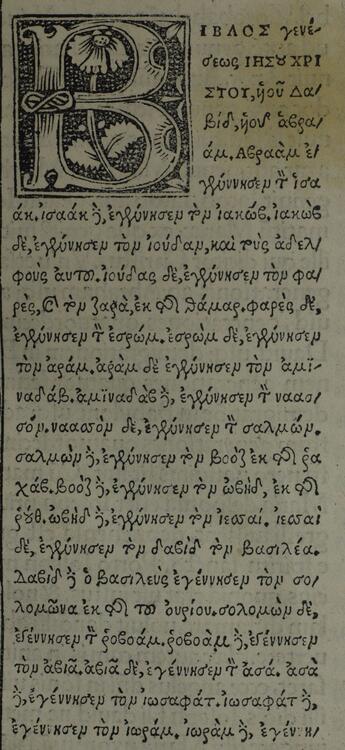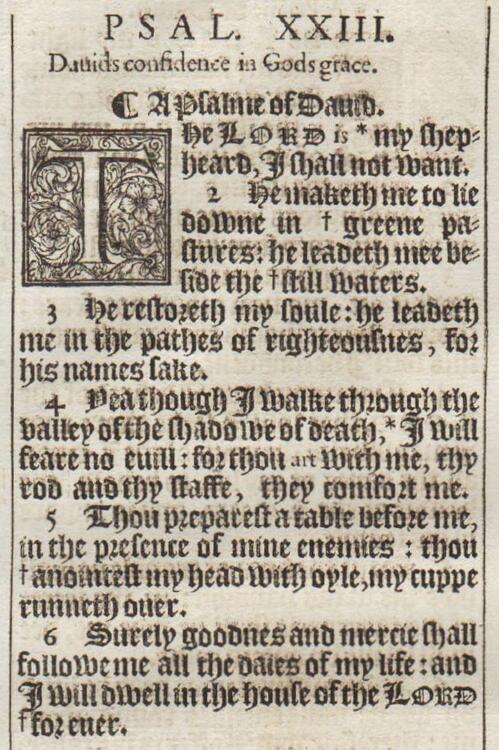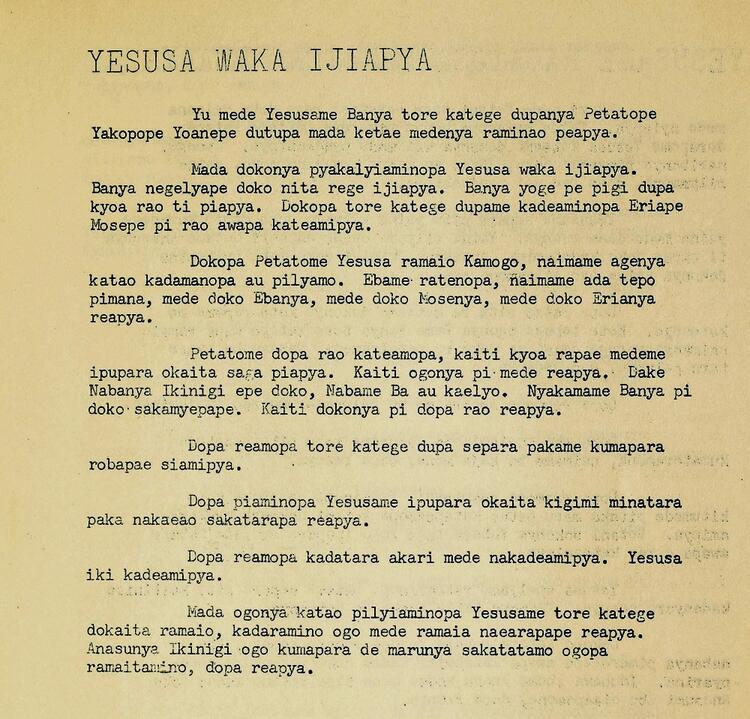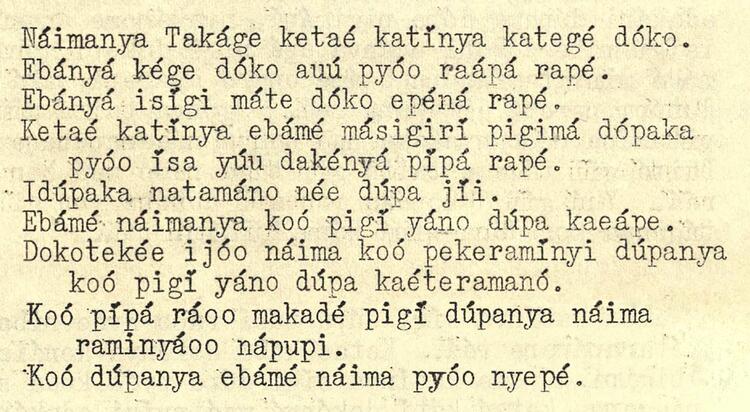The New Testament was first written in Greek by followers of Jesus two thousand years ago. For 1,500 years the books of the New Testament were copied by hand. Although many of those manuscripts have been lost or destroyed, over 5,000 manuscripts remain today. In 1516 the Dutch scholar Erasmus published the first printed Greek New Testament based on only seven manuscripts. In 1611 English Bible scholars published the King James Version after reviewing the available printed editions of the Greek New Testament along with the available printed editions of the Hebrew Old Testament, which they had translated into English.
Lutheran, Catholic, and Seventh Day Adventist missionaries first came to Enga in 1947 and 1948, followed by Baptist missionaries in 1950. In 1955 the Lutheran mission published a small collection of Bible stories in the Mai dialect. Six years later, in 1961, the Lutheran mission published an expanded collection of Bible stories in the Laeyapo dialect. In 1973 the Baptist mission completed the New Testament in the Kyaka language, which is very closely related to Enga. This translation was adapted to the Sau dialect of Enga and published in 1979. In 1988 the Lutheran and Catholic missions completed a translation of the New Testament using a mixture of the Mai and Laeyapo dialects.
In 2006 Enga speakers within the Lutheran Church began working on a translation of the JESUS Film script. When the translation and recording were completed and the film was distributed, it was very well received.
In 2012 pastors and priests from the various church denominations in Enga met together at the Christian Life Center Church in Wabag and decided to revise the 1988 version of the Enga New Testament into the Central (Kaina) dialect. This decision was made because Wabag is located in the center of the Sau, Kopona, Saka, Kandepe, Taeyato, Mai, and Laeyapo dialects, and all Enga speakers would be able to understand the Central dialect. Thus a new translation of the Enga New Testament was undertaken with participation from the Lutheran, Catholic, Apostolic, ALC, Foursquare, Christian Life Center, and Assemblies of God churches.
In order to ensure an accurate translation, the translators of the 2023 version of the Enga New Testament reviewed the Greek New Testament, various English translations, the Tok Pisin Buk Baibel, the 1988 Enga version, and various commentaries and resources regarding the Koine Greek language, biblical interpretation, and biblical culture. Although the translation began as a revision of the 1988 version, the end result was an entirely new translation based on the Byzantine Greek text.
After completing the 2023 Enga New Testament translation, an audio recording of the translation was made. This recording is now available as mp3 audio files, solar-powered audio players, and the Enga Bible app, which highlights the text sentence by sentence as the audio recording plays. The Enga Bible is also available on the YouVersion and Scripture Earth Bible apps, which are compatible with iPhones. These two apps also highlight the text as the recording plays.
After the completion of the 2023 version of the Enga New Testament, the Enga translation team focused their attention on translating the Old Testament. One year later, in 2024, Enga story books and an Enga dictionary were published to promote the continued use of the Enga language and provide resources for Enga speakers to learn to read and write in their own language. The Enga Library app and the Enga Dictionary app are both available on the Google Play store.



